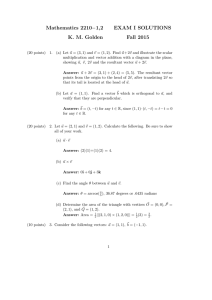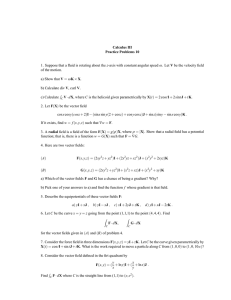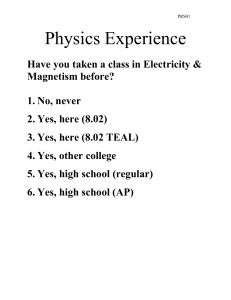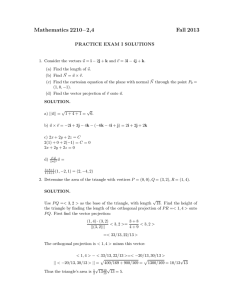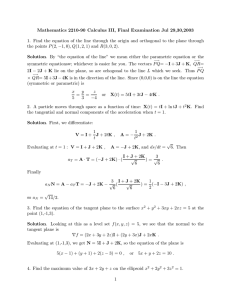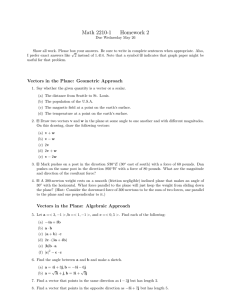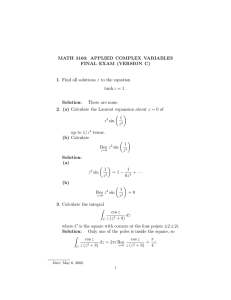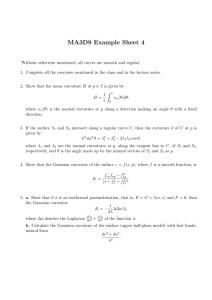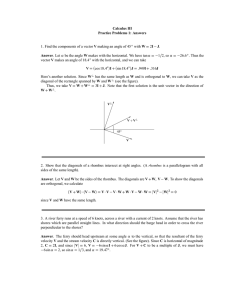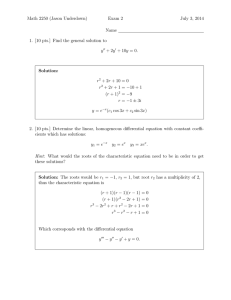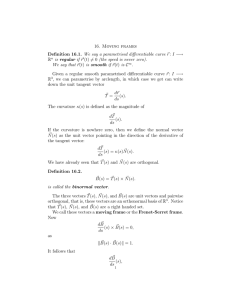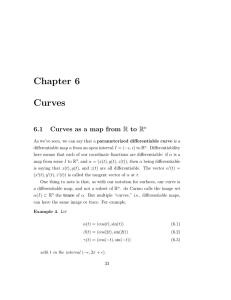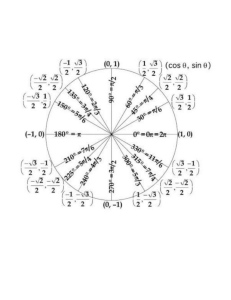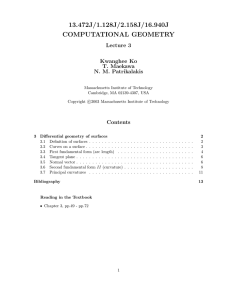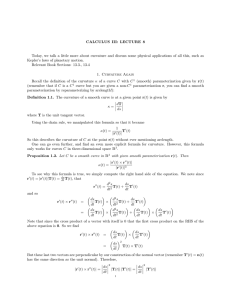Mathematics 2210−2,4 PRACTICE EXAM I Fall 2013
advertisement
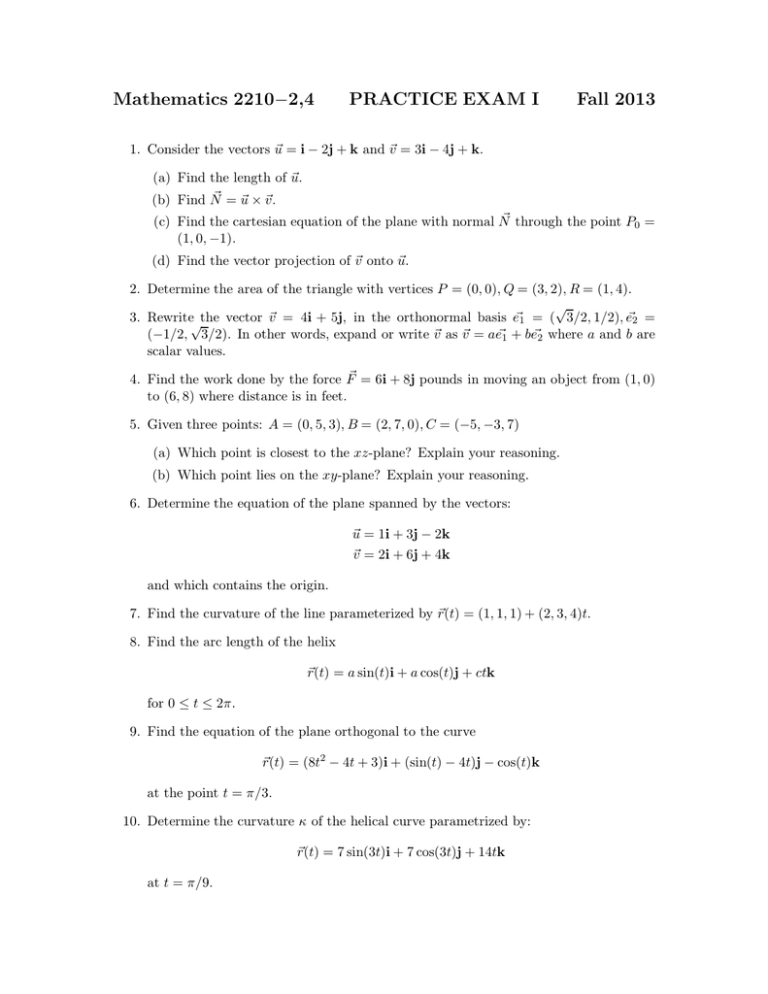
Mathematics 2210−2,4 PRACTICE EXAM I Fall 2013 1. Consider the vectors u ~ = i − 2j + k and ~v = 3i − 4j + k. (a) Find the length of ~u. ~ = ~u × ~v . (b) Find N ~ through the point P0 = (c) Find the cartesian equation of the plane with normal N (1, 0, −1). (d) Find the vector projection of ~v onto u ~. 2. Determine the area of the triangle with vertices P = (0, 0), Q = (3, 2), R = (1, 4). √ 3. Rewrite√the vector ~v = 4i + 5j, in the orthonormal basis e~1 = ( 3/2, 1/2), e~2 = (−1/2, 3/2). In other words, expand or write ~v as ~v = ae~1 + be~2 where a and b are scalar values. ~ = 6i + 8j pounds in moving an object from (1, 0) 4. Find the work done by the force F to (6, 8) where distance is in feet. 5. Given three points: A = (0, 5, 3), B = (2, 7, 0), C = (−5, −3, 7) (a) Which point is closest to the xz-plane? Explain your reasoning. (b) Which point lies on the xy-plane? Explain your reasoning. 6. Determine the equation of the plane spanned by the vectors: ~u = 1i + 3j − 2k ~v = 2i + 6j + 4k and which contains the origin. 7. Find the curvature of the line parameterized by ~r(t) = (1, 1, 1) + (2, 3, 4)t. 8. Find the arc length of the helix ~r(t) = a sin(t)i + a cos(t)j + ctk for 0 ≤ t ≤ 2π. 9. Find the equation of the plane orthogonal to the curve ~r(t) = (8t2 − 4t + 3)i + (sin(t) − 4t)j − cos(t)k at the point t = π/3. 10. Determine the curvature κ of the helical curve parametrized by: ~r(t) = 7 sin(3t)i + 7 cos(3t)j + 14tk at t = π/9. 11. Given that the acceleration of a particle’s motion is ~a(t) = −9 cos(3t)i + −9 sin(3t)j + 2tk. And the particle has initial velocity ~v0 = i + k and intial position x ~ 0 = i + j + k. (a) Determine the velocity function ~v(t). (b) Determine the position function ~x(t). 12. Let ~u = (2, 2) and ~v = (3, −1). Find u ~ + ~v and illustrate this vector addition with a diagram in the plane, showing ~u, ~v and the resultant vector.






